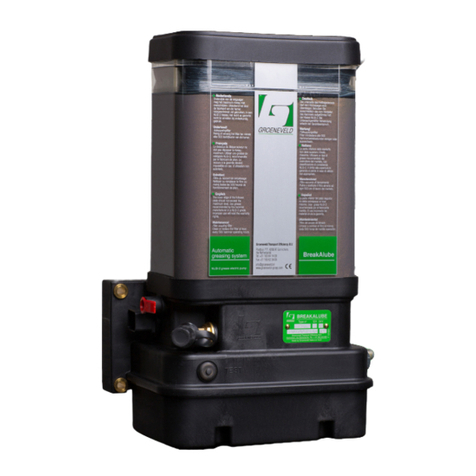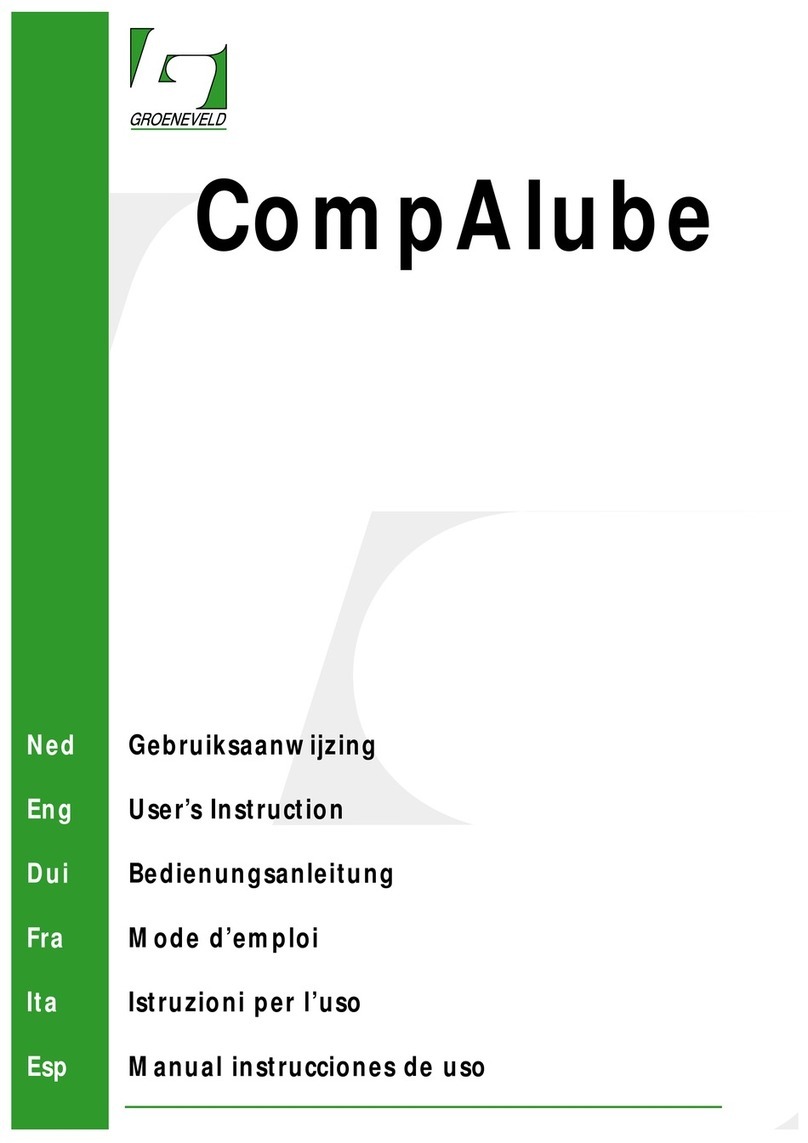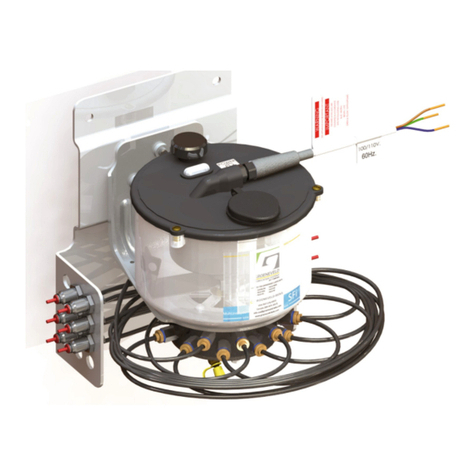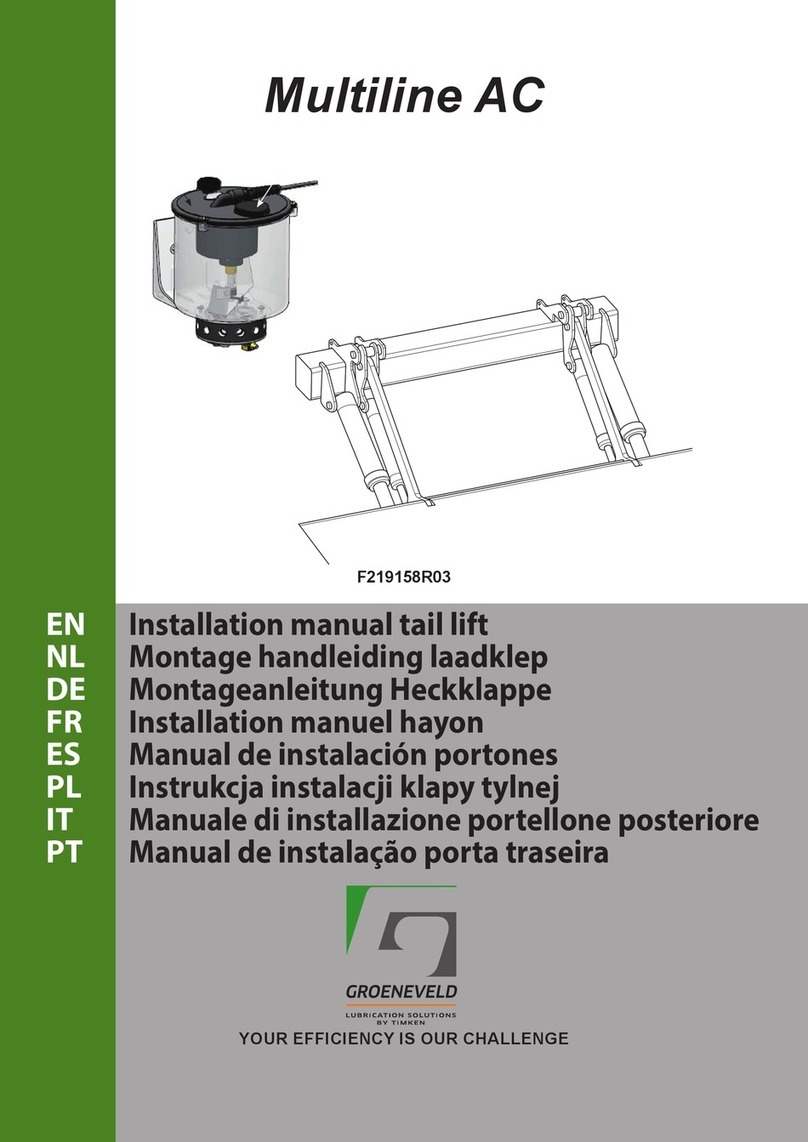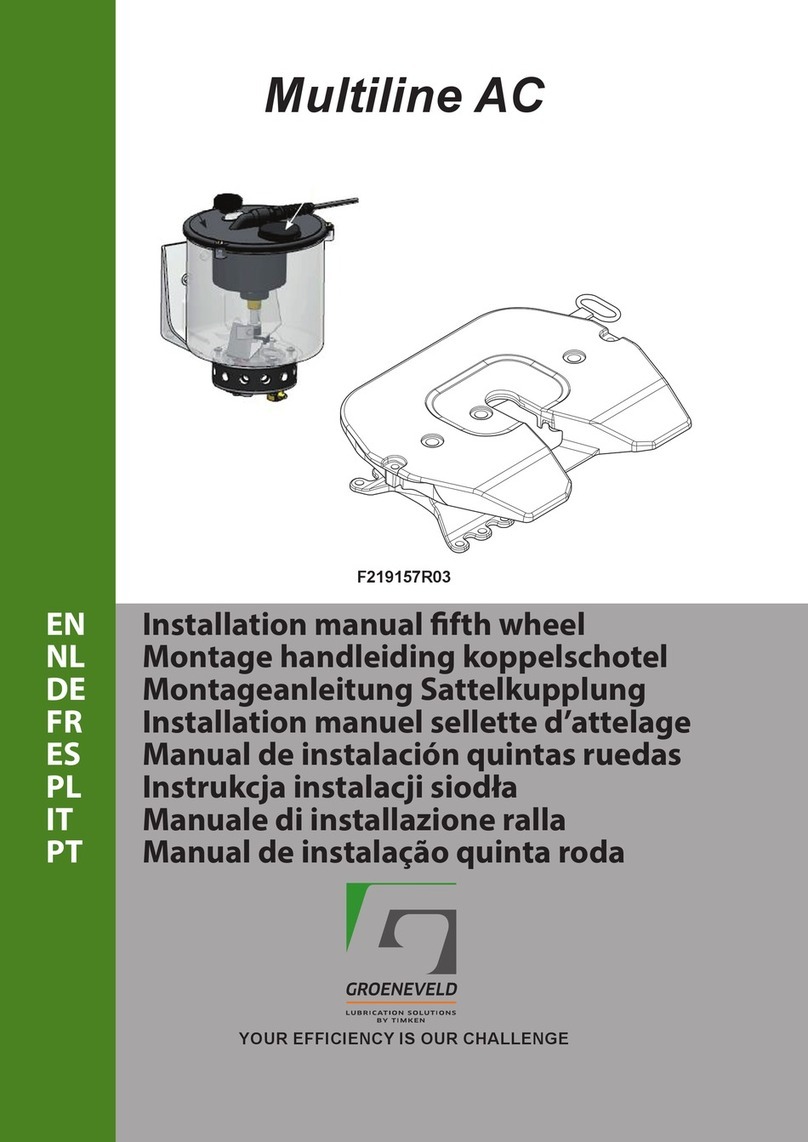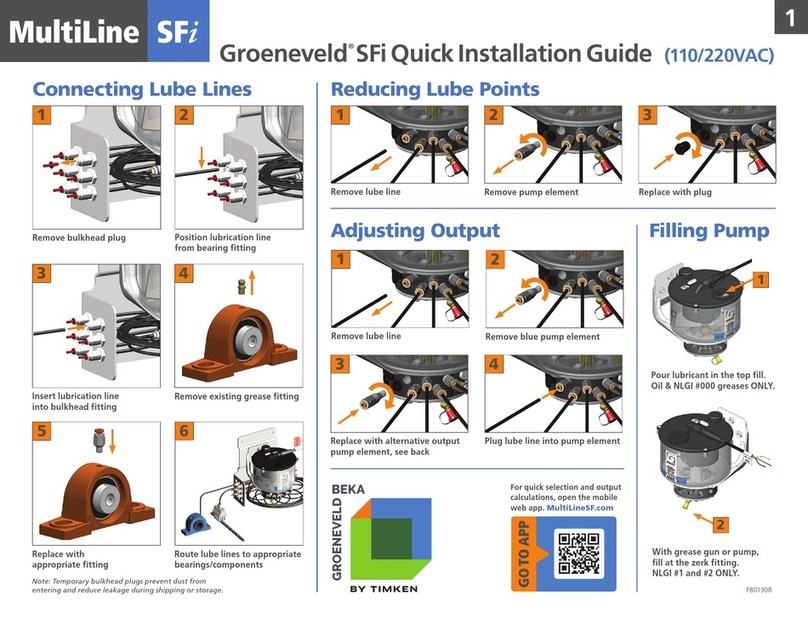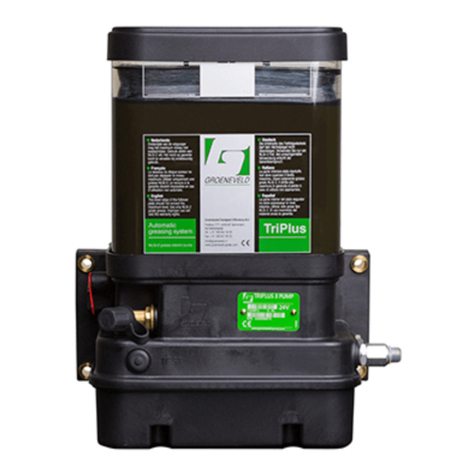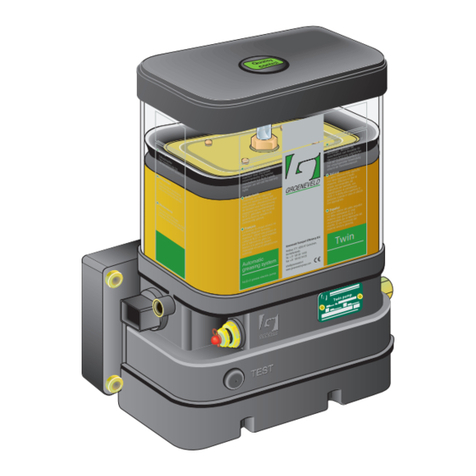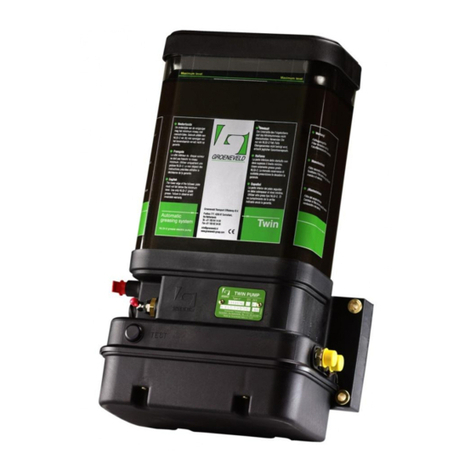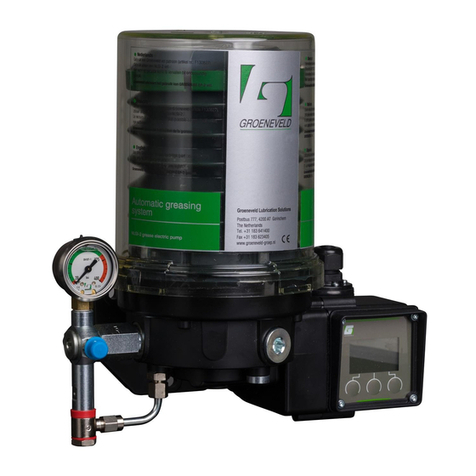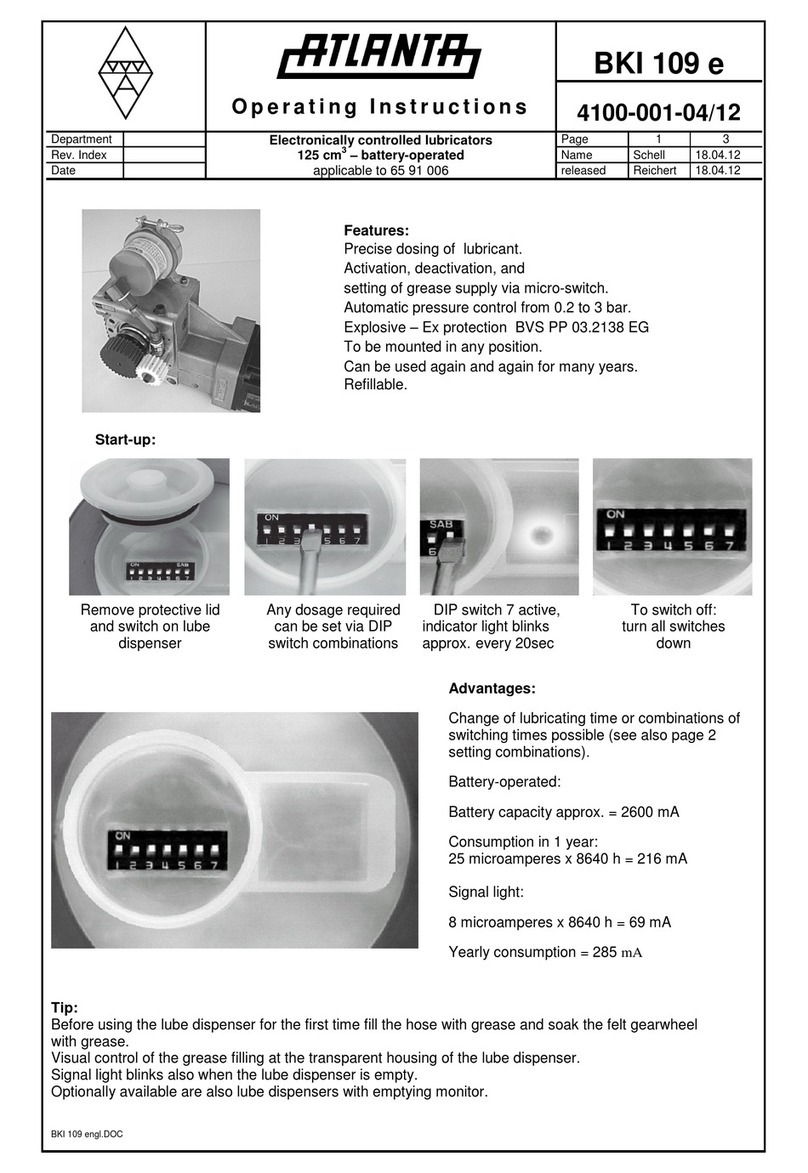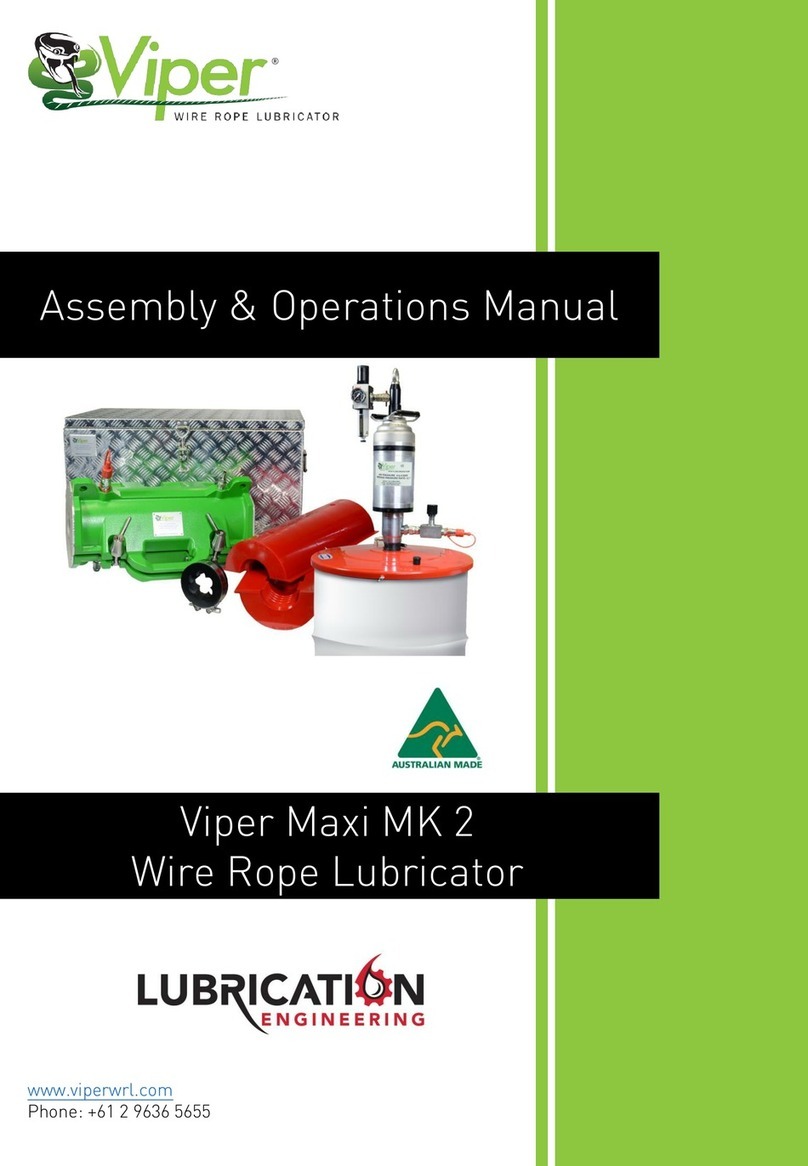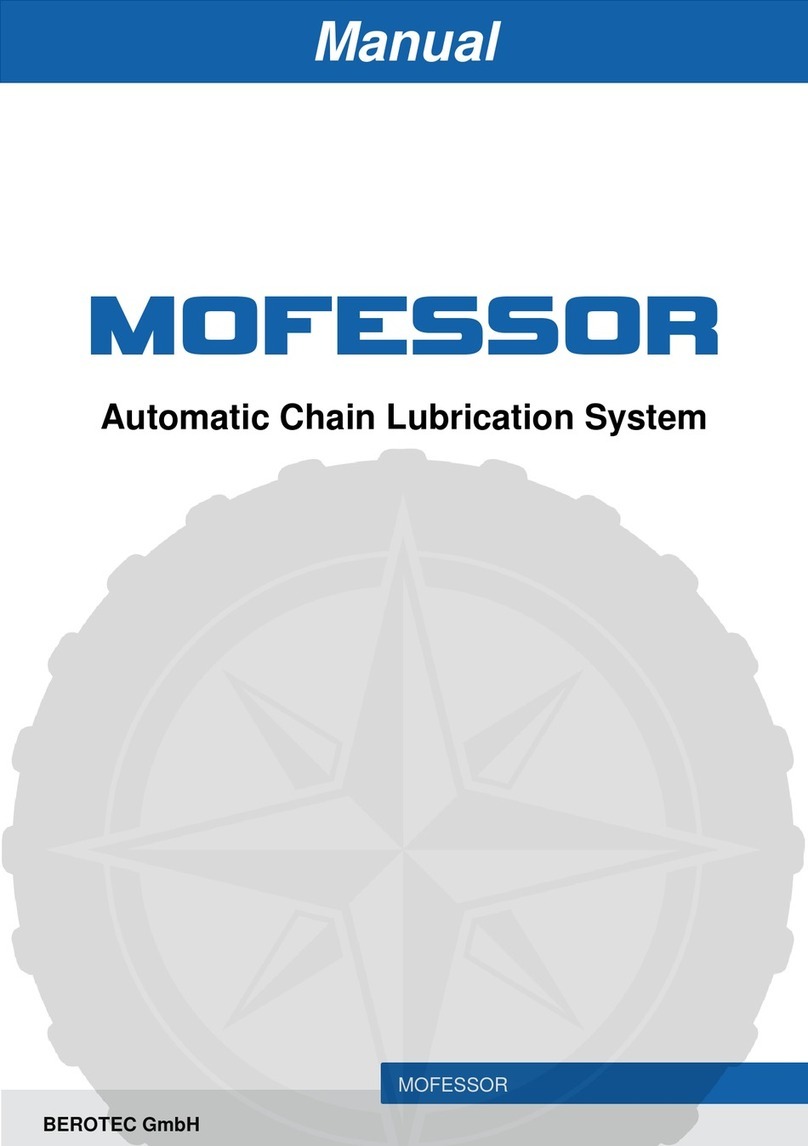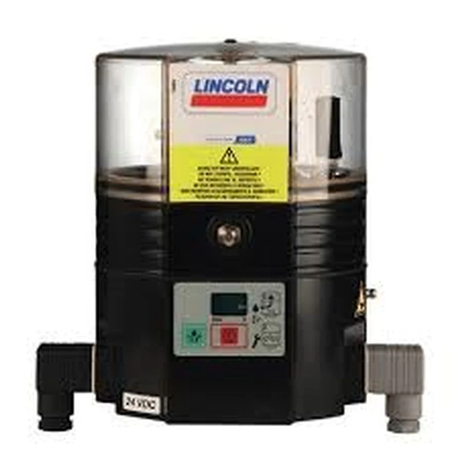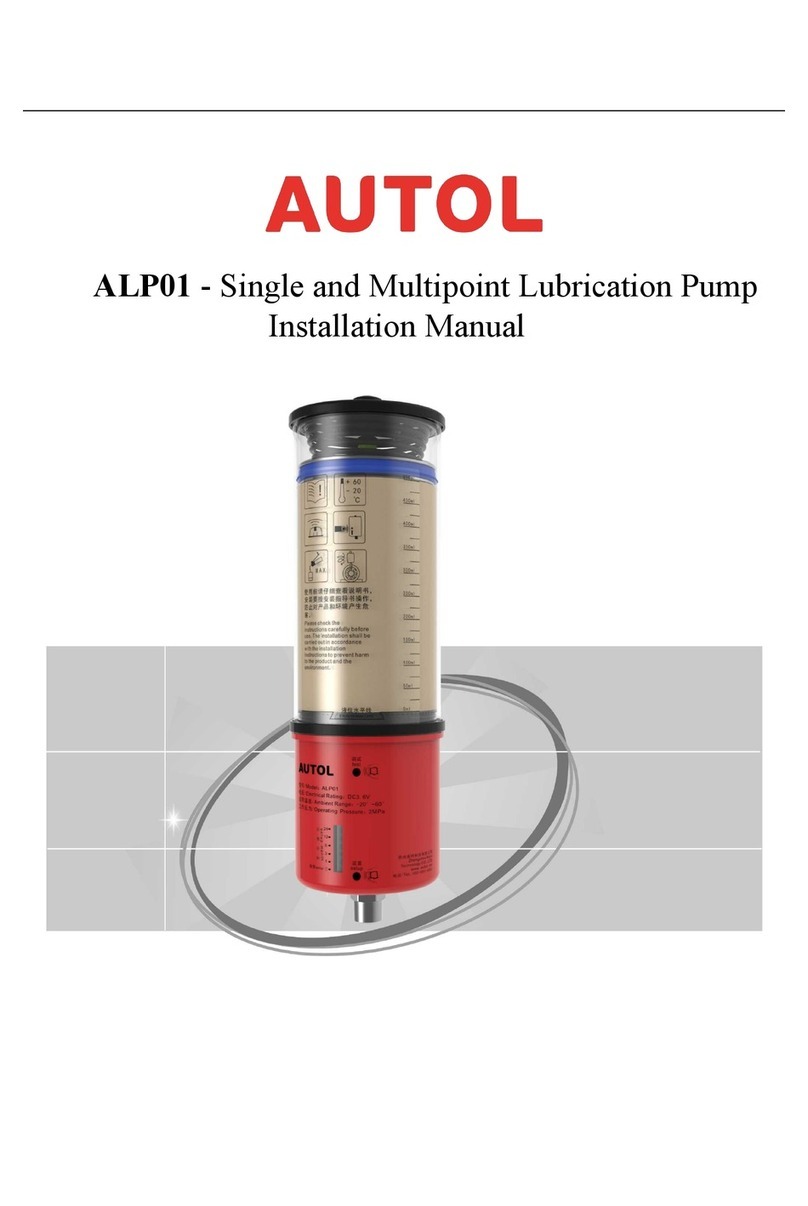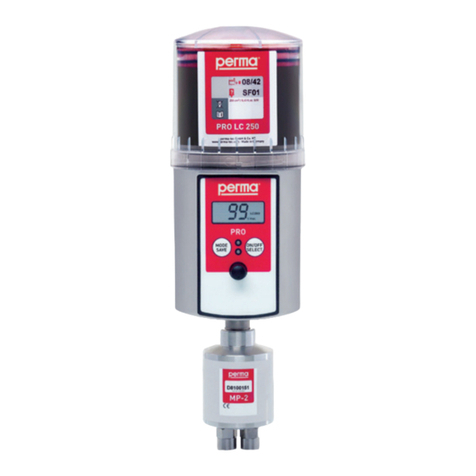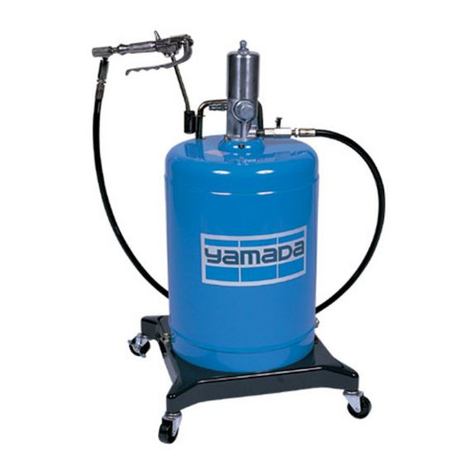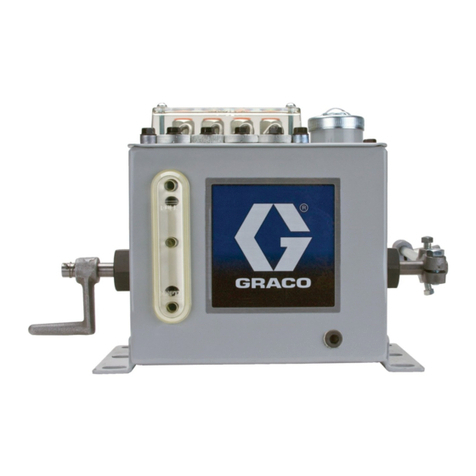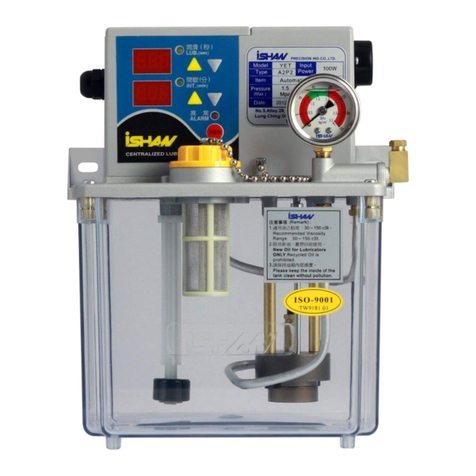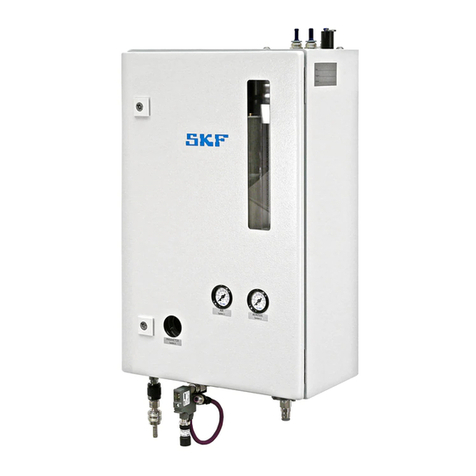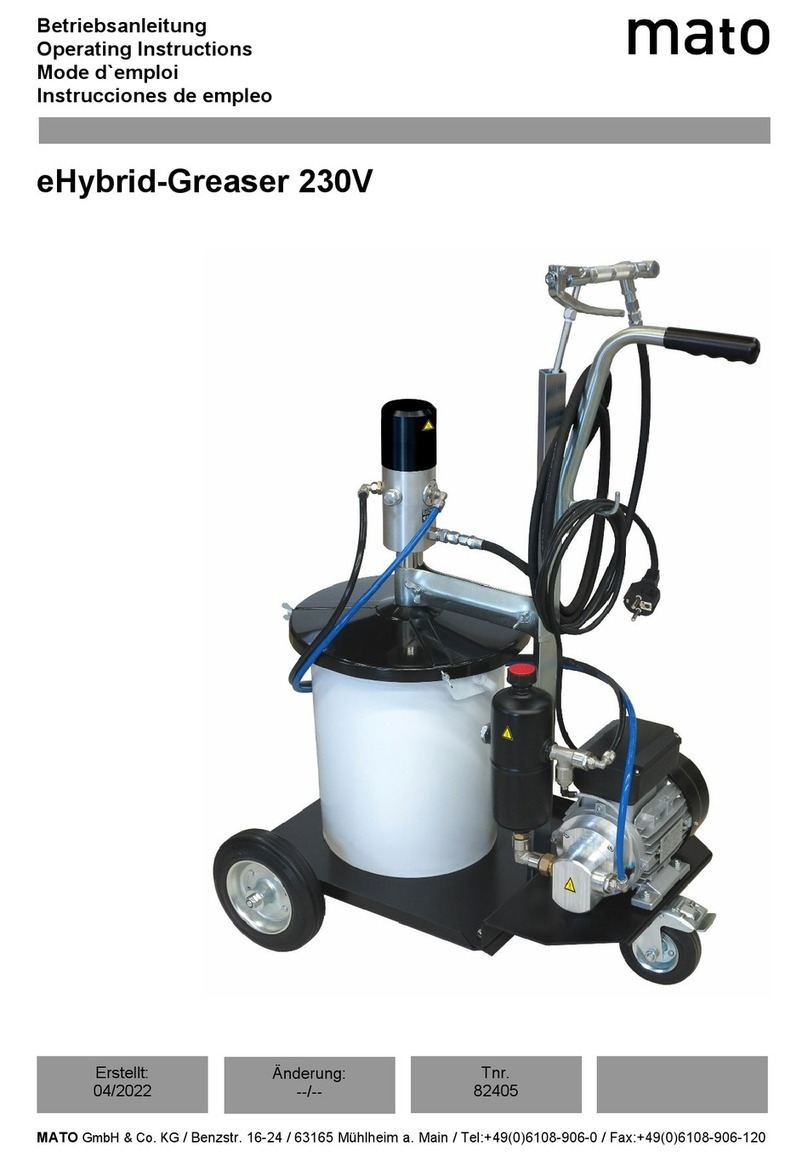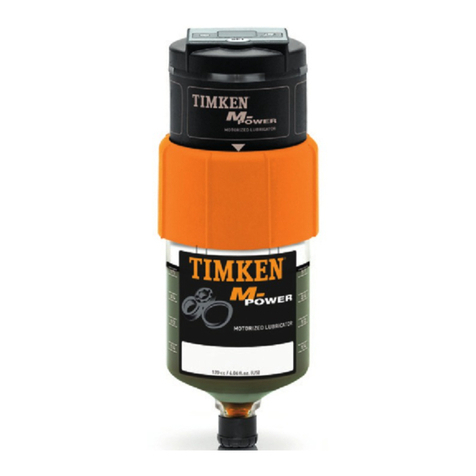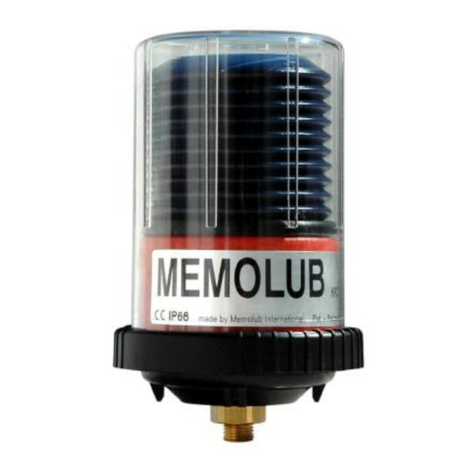
3Table of ContentsF212157R02
Automatic Greasing System TriPlus Trailer
Date of issue : September 2012
Table of Contents
Preface - - - - - - - - - - - - - - - - - - - - - - - - - - - - - - - - - - - - - - - - - - - - - - - - - - - - - - - 5
1. General information - - - - - - - - - - - - - - - - - - - - - - - - - - - - - - - - - - - - - - - - - - - - - 6
1.1. Introduction- - - - - - - - - - - - - - - - - - - - - - - - - - - - - - - - - - - - - - - - - - - - - - - - - - - - - - - - - 6
1.2. The TriPlus automatic greasing system - - - - - - - - - - - - - - - - - - - - - - - - - - - - - - - - - - - - - 7
2. Description components - - - - - - - - - - - - - - - - - - - - - - - - - - - - - - - - - - - - - - - - - - 8
2.1. Properties - - - - - - - - - - - - - - - - - - - - - - - - - - - - - - - - - - - - - - - - - - - - - - - - - - - - - - - - - - 8
2.2. Composition of the TriPlus trailer pump - - - - - - - - - - - - - - - - - - - - - - - - - - - - - - - - - - - - 9
2.3. The intigrated control and monitoring unit - - - - - - - - - - - - - - - - - - - - - - - - - - - - - - - - 10
2.4. The plunger pump - - - - - - - - - - - - - - - - - - - - - - - - - - - - - - - - - - - - - - - - - - - - - - - - - - - 10
2.5. Safety and control features - - - - - - - - - - - - - - - - - - - - - - - - - - - - - - - - - - - - - - - - - - - - 11
2.5.1. Maximum grease pressure - - - - - - - - - - - - - - - - - - - - - - - - - - - - - - - - - - - - - - 11
2.5.2. Minimum grease-level in the reservoir - - - - - - - - - - - - - - - - - - - - - - - - - - - - - 11
2.5.3. Defective wiring and short-circuits - - - - - - - - - - - - - - - - - - - - - - - - - - - - - - - - 11
2.6. The test pushbutton - - - - - - - - - - - - - - - - - - - - - - - - - - - - - - - - - - - - - - - - - - - - - - - - - - 12
2.6.1. Performing a test cycle - - - - - - - - - - - - - - - - - - - - - - - - - - - - - - - - - - - - - - - - - 12
2.6.2. Retrieving fault messages - - - - - - - - - - - - - - - - - - - - - - - - - - - - - - - - - - - - - - - 12
2.7. The signal light - - - - - - - - - - - - - - - - - - - - - - - - - - - - - - - - - - - - - - - - - - - - - - - - - - - - - 13
2.8. The distribution blocks - - - - - - - - - - - - - - - - - - - - - - - - - - - - - - - - - - - - - - - - - - - - - - - - 15
2.8.1. Properties- - - - - - - - - - - - - - - - - - - - - - - - - - - - - - - - - - - - - - - - - - - - - - - - - - - 15
2.8.2. Composition- - - - - - - - - - - - - - - - - - - - - - - - - - - - - - - - - - - - - - - - - - - - - - - - - 15
2.8.3. Principle of operation- - - - - - - - - - - - - - - - - - - - - - - - - - - - - - - - - - - - - - - - - - 16
2.8.4. Non-return valves - - - - - - - - - - - - - - - - - - - - - - - - - - - - - - - - - - - - - - - - - - - - - 17
2.8.5. Failure of one of the doser segments - - - - - - - - - - - - - - - - - - - - - - - - - - - - - - 17
2.8.6. Closing outputs - - - - - - - - - - - - - - - - - - - - - - - - - - - - - - - - - - - - - - - - - - - - - - 17
2.8.7. Combining outputs- - - - - - - - - - - - - - - - - - - - - - - - - - - - - - - - - - - - - - - - - - - - 17
3. The GINA - - - - - - - - - - - - - - - - - - - - - - - - - - - - - - - - - - - - - - - - - - - - - - - - - - - - 18
3.1. Introduction- - - - - - - - - - - - - - - - - - - - - - - - - - - - - - - - - - - - - - - - - - - - - - - - - - - - - - - - 18
3.2. Connecting the GINA - - - - - - - - - - - - - - - - - - - - - - - - - - - - - - - - - - - - - - - - - - - - - - - - - 19
3.3. Control pad - - - - - - - - - - - - - - - - - - - - - - - - - - - - - - - - - - - - - - - - - - - - - - - - - - - - - - - - 19
3.4. Switching on the GINA - - - - - - - - - - - - - - - - - - - - - - - - - - - - - - - - - - - - - - - - - - - - - - - - 19
3.5. Main menu - - - - - - - - - - - - - - - - - - - - - - - - - - - - - - - - - - - - - - - - - - - - - - - - - - - - - - - - 20
3.6. Parameters timer - - - - - - - - - - - - - - - - - - - - - - - - - - - - - - - - - - - - - - - - - - - - - - - - - - - - 23
3.7. Diagnosis menu - - - - - - - - - - - - - - - - - - - - - - - - - - - - - - - - - - - - - - - - - - - - - - - - - - - - - 25
3.8. Layout of the menu system- - - - - - - - - - - - - - - - - - - - - - - - - - - - - - - - - - - - - - - - - - - - - 31
3.8.1. Used abbreviations - - - - - - - - - - - - - - - - - - - - - - - - - - - - - - - - - - - - - - - - - - - - 31
3.8.2. Main menu- - - - - - - - - - - - - - - - - - - - - - - - - - - - - - - - - - - - - - - - - - - - - - - - - - 33
3.8.3. Parameters menu - - - - - - - - - - - - - - - - - - - - - - - - - - - - - - - - - - - - - - - - - - - - - 33
3.8.4. Diagnosis menu - - - - - - - - - - - - - - - - - - - - - - - - - - - - - - - - - - - - - - - - - - - - - - 34
4. Designing a system - - - - - - - - - - - - - - - - - - - - - - - - - - - - - - - - - - - - - - - - - - - - - 35
4.1. Introduction- - - - - - - - - - - - - - - - - - - - - - - - - - - - - - - - - - - - - - - - - - - - - - - - - - - - - - - - 35
4.2. Points of departure - - - - - - - - - - - - - - - - - - - - - - - - - - - - - - - - - - - - - - - - - - - - - - - - - - 35
4.3. Method - - - - - - - - - - - - - - - - - - - - - - - - - - - - - - - - - - - - - - - - - - - - - - - - - - - - - - - - - - - 37
4.3.1. Determine the operating conditions - - - - - - - - - - - - - - - - - - - - - - - - - - - - - - - 37
4.3.2. Produce a greasing plan - - - - - - - - - - - - - - - - - - - - - - - - - - - - - - - - - - - - - - - - 37
4.3.3. Determine the grease demand of the grease points - - - - - - - - - - - - - - - - - - - 37
4.3.4. Group the grease points - - - - - - - - - - - - - - - - - - - - - - - - - - - - - - - - - - - - - - - - 38
4.3.5. Determine the layout of the system - - - - - - - - - - - - - - - - - - - - - - - - - - - - - - - 38
4.3.6. Check the design - - - - - - - - - - - - - - - - - - - - - - - - - - - - - - - - - - - - - - - - - - - - - 39
